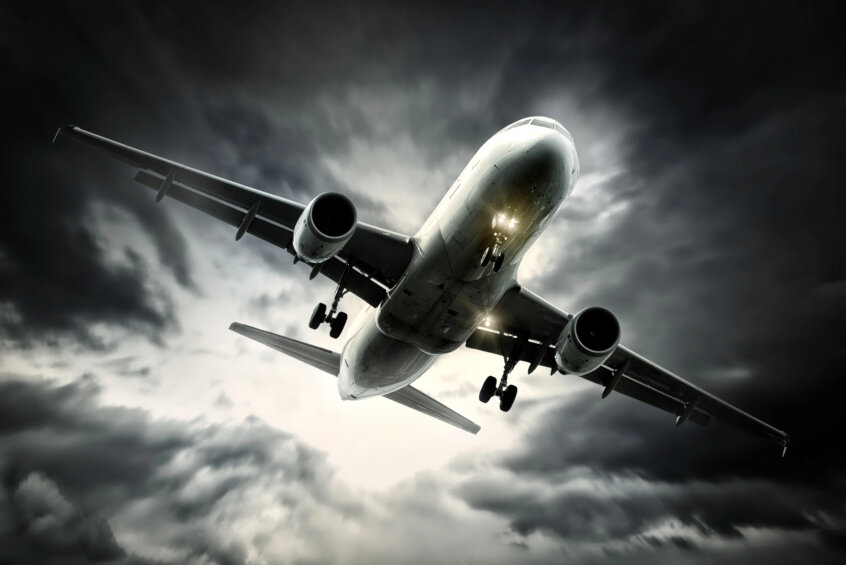By: Brian Johnson

Eliminating Variables in Your Flight Operations
While some variables are unavoidable, you have control over many of them.The best way to stay safe as a pilot is to actively reduce risk factors before they become problematic.
- Keep Your Flight Plans Simple
The more complexity you introduce, the more chances something will go wrong.
✅ Good practice:Plan the simplest, most direct route while avoiding unnecessary congestion or restricted airspace.
🚫 Bad practice:Adding unnecessary legs or detours, flying through complex airspace, or making ambitious fuel calculations.
- Know Your Limits and Stick to Them
Every pilot has personal minimums; as a young aviator, your limits should be conservative.
✅ Good practice:If the weather is marginal or worsening, delay the flight or take an alternate route.
🚫 Bad practice:Thinking, “I’ll figure it out once I’m in the air.” This mindset has led many pilots into trouble.
- Reduce Workload by Preparing Thoroughly
Aviation accidents often happen when pilots become overloaded. The more you prepare on the ground, the less you’ll have to think about in the air.
✅ Good practice:Have a solid preflight plan, understand emergency procedures, and be familiar with your aircraft.
🚫 Bad practice:Rushing through preflight or assuming you’ll remember everything mid-flight.
- Minimize Distractions in the Cockpit
Your focus should be 100% on flying the airplane.
✅ Good practice:Set up radios and navigation systems before takeoff. Use sterile cockpit procedures during critical phases.
🚫 Bad practice:Fumbling with your GPS, chatting with passengers, or getting distracted by non-essential cockpit tasks.
- Maintain Situational Awareness at All Times
Pilots get into trouble when they assume someone else is handling things.
✅ Good practice:If something doesn’t seem right, question it.If another aircraft is in your vicinity but you don’t have them in sight, double-check your position.
🚫 Bad practice:Assuming “everything is fine” without verifying.
- Expect the Unexpected and Have a Backup Plan
Even the best pilots face surprises. The key is having a plan in place so those surprises don’t become emergencies.
✅ Good practice:Always have an alternate airport in mind. Be ready to go around or divert if needed.
🚫 Bad practice:Sticking to a plan no matter what, even when conditions change.
As a young pilot, one of the most valuable lessons you can learn is that accidents don’t happen in isolation. They are almost always the result of multiple factors compounding into an uncontrollable situation—a concept known as the “accident chain.”
One of the greatest risks in aviation isn’t just making mistakes but adding too many variables into your flight operation.Risk does not just increase—it multiplies. History has shown time and time again that when pilots fail to manage variables, small problems quickly spiral into catastrophic failures.
Let’s explore how famous aviation accidents demonstrate the dangers of uncontrolled variables—and how you can apply these lessons to your own flying.
The Problem with Too Many Variables
Think of a flight as a complex machine. The more moving parts it has, the more potential points of failure exist.
Aviation history is filled with accidents where multiple, seemingly minor issues compounded into disaster. Here are just a few examples:
- Eastern Air Lines Flight 401 (1972)– A simple burned-out landing gear indicator light distracted the entire flight crew. While they focused on troubleshooting the light, no one noticed that the autopilot had been unintentionally disengaged, leading to an unnoticed descent and a crash into the Florida Everglades.
- United Airlines Flight 173 (1978)– Similar to Eastern 401, the crew became preoccupied with a landing gear issue and ran out of fuel before reaching the airport, crashing just miles from the runway.
- Air France Flight 447 (2009)– In an already challenging environment over the Atlantic at night, the aircraft’s pitot tubes froze, causing unreliable airspeed readings. Instead of following basic upset recovery procedures, the pilots became overwhelmed by conflicting data, resulting in an aerodynamic stall from which they never recovered.
These accidents could have been avoided if the pilots had recognized and managed their variables better.
Final Thoughts: Smart Pilots Manage Variables
Aviation history has shown that when too many variables go unchecked, disaster follows. The best pilots actively eliminate unnecessary risks, plan ahead, and fly with precision.
Your goal should always be to simplify your operations, reduce risk, and never assume you’ll “just figure it out” in the air.Every variable you remove is one less thing that can go wrong.
Stay disciplined, stay prepared, and always prioritize safety—because in aviation, you don’t get second chances

